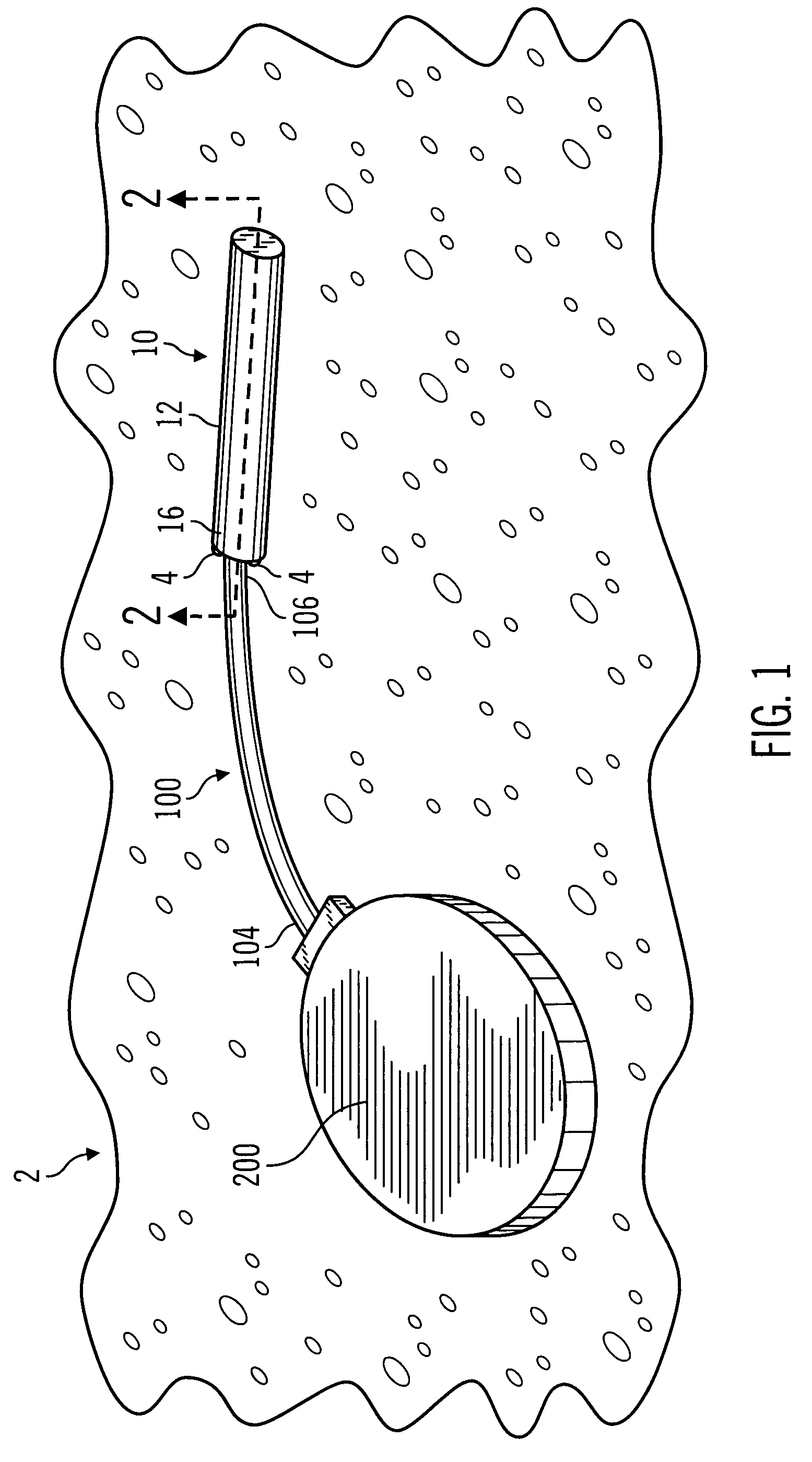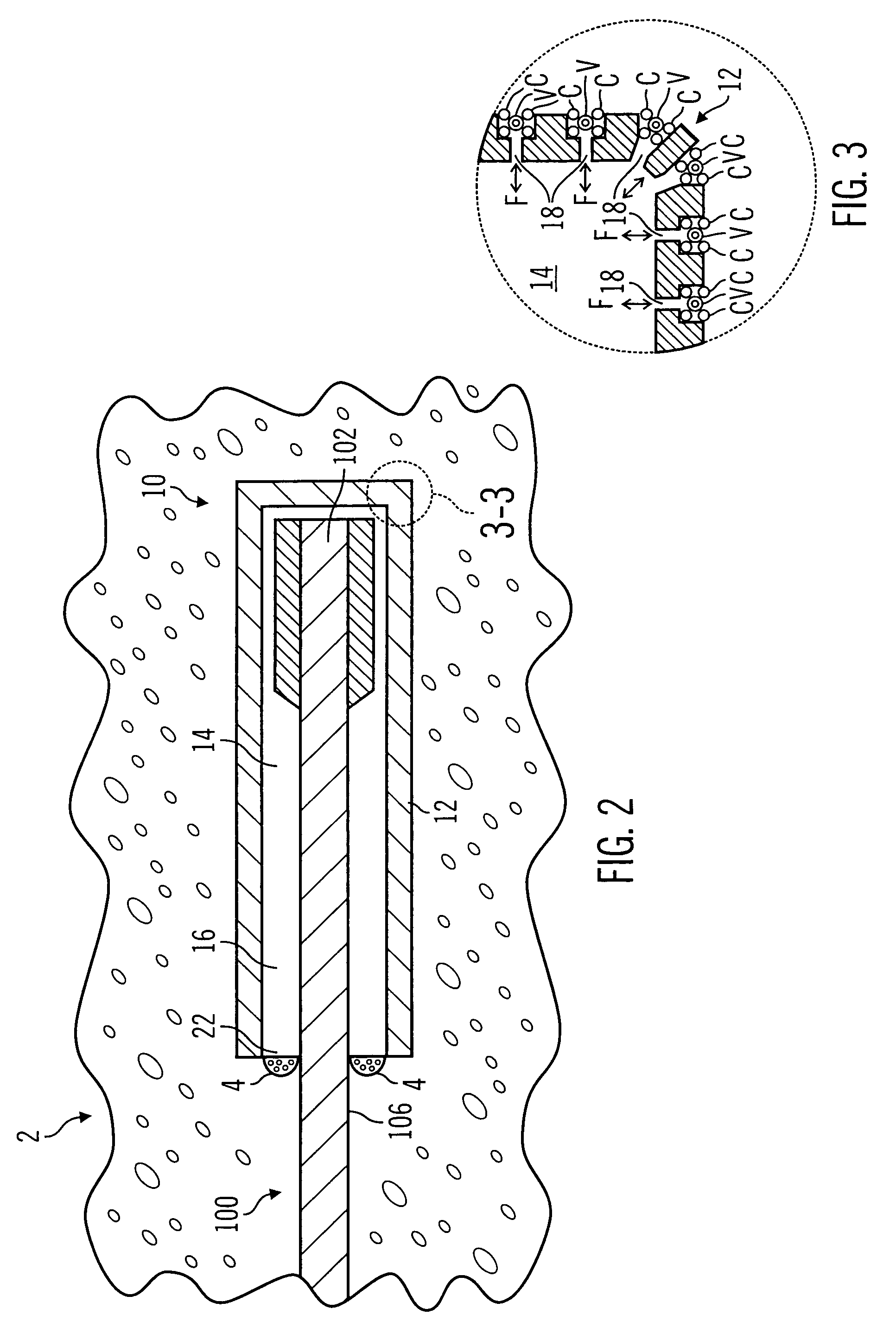Reusable analyte sensor site and method of using the same
a technology of analyte sensor and reusable analyte, which is applied in the field of reusable analyte sensor sites, can solve the problems of requiring regular replacement, unable to provide continuous data, so as to promote vascularization
- Summary
- Abstract
- Description
- Claims
- Application Information
AI Technical Summary
Benefits of technology
Problems solved by technology
Method used
Image
Examples
Embodiment Construction
[0045]As shown in the drawings for purposes of illustration, the invention is embodied in a reusable analyte sensor site that is used with a replaceable analyte sensor that determines body characteristics on a continuous, intermittent or near continuous basis. In preferred embodiments of the present invention, the replaceable analyte sensor is for determining glucose levels in the blood and / or bodily fluids of the user. However, it will be recognized that further embodiments of the invention may be used to determine the levels of other agents, characteristics or compositions, such as lactate, oxygen, hormones, cholesterol, medication concentrations, viral loads (e.g., HIV), or the like. The reusable analyte sensor site and replaceable analyte sensor are primarily adapted for use in sub-dermal or inter-peritoneal human tissue. However, still further embodiments may be placed in other types of tissue, such as muscle, lymph, organ tissue, veins, arteries or the like, and used in animal...
PUM
 Login to View More
Login to View More Abstract
Description
Claims
Application Information
 Login to View More
Login to View More - R&D
- Intellectual Property
- Life Sciences
- Materials
- Tech Scout
- Unparalleled Data Quality
- Higher Quality Content
- 60% Fewer Hallucinations
Browse by: Latest US Patents, China's latest patents, Technical Efficacy Thesaurus, Application Domain, Technology Topic, Popular Technical Reports.
© 2025 PatSnap. All rights reserved.Legal|Privacy policy|Modern Slavery Act Transparency Statement|Sitemap|About US| Contact US: help@patsnap.com



